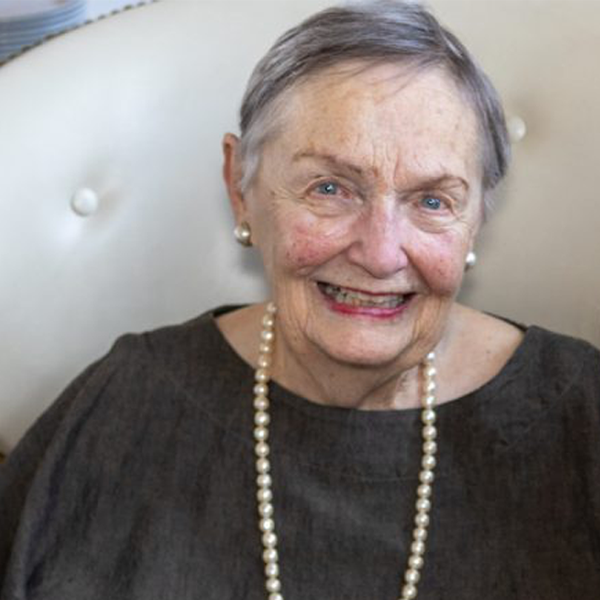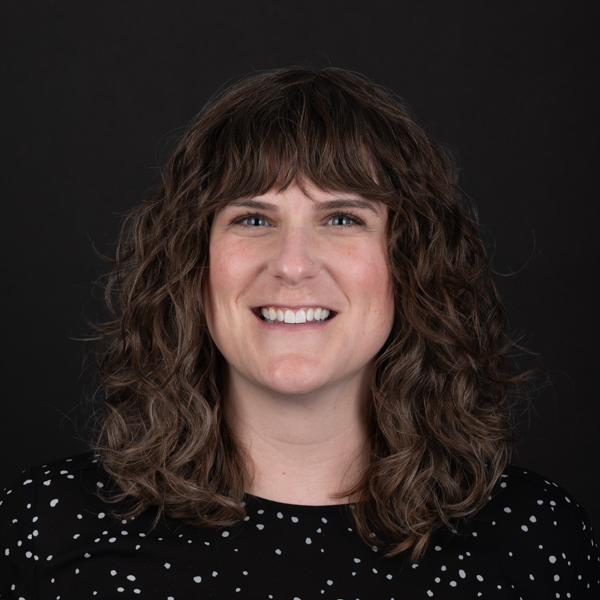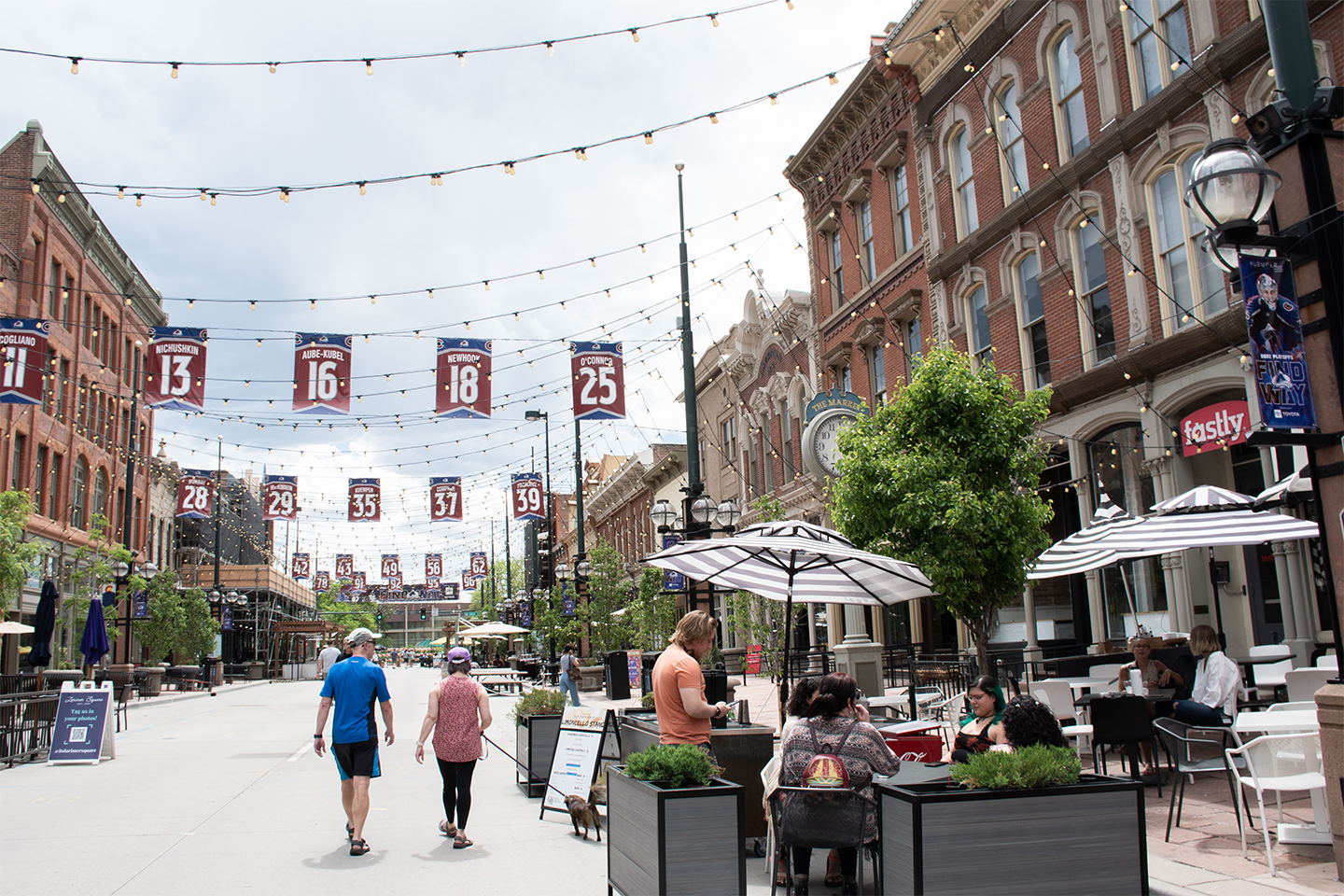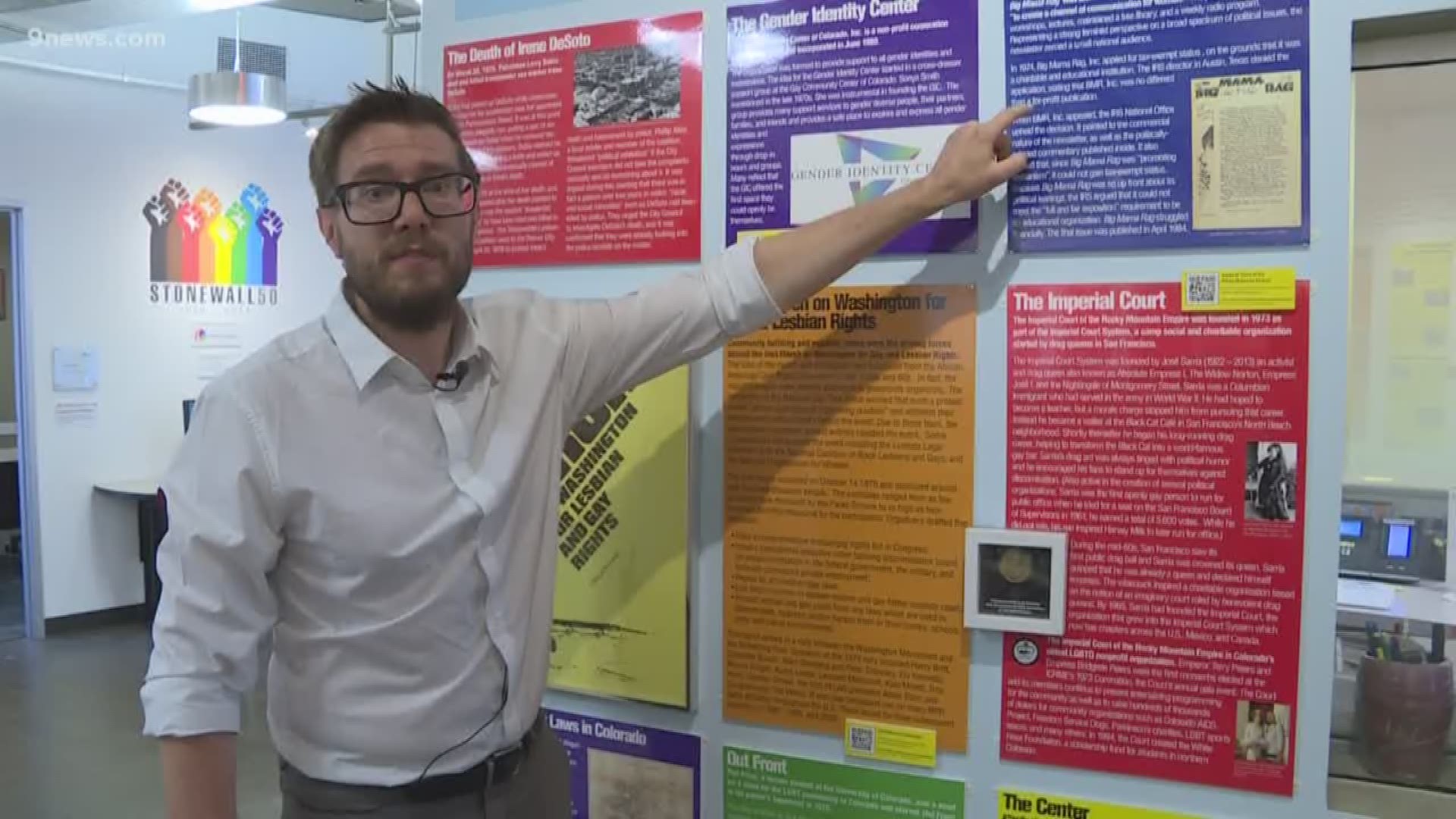Dana Crawford Preservation Program
Our Program
Our program is named in honor of Dana Crawford, an award-winning preservationist, and pioneer for urban renewal in the United States. She paved the way for redevelopment in the City of Denver, most notably in the mid-1960s when she revitalized Larimer Square, which now serves as a prototype for redeveloping main streets and architectural landmarks nationwide.

Remembering Dana Crawford, Denver's Champion for Urban Revitalization
In 2022, the College of Architecture and Planning Preservation Program was named in honor of the legendary Dana Crawford, a trailblazer for historic preservation and urban revitalization in Colorado.
Crawford's many contributions to Denver's preservation include Larimer Square, Oxford Hotel, Ice House, Acme Lofts, Edbrooke Lofts, Cooper Flats, Flour Mill Lofts, Ajax Lofts, Jack Kerouac Lofts, and Union Station.
At CU Denver, we are proud to continue Crawford's legacy, which will be celebrated and remembered thanks to her wellspring of contributions to the community we call home and through future generations of students studying historic preservation in the Dana Crawford Preservation Program.
Why Study Preservation?
There are as many reasons to study historic preservation as there are historic buildings. Some choose to study preservation because of their love for history and the way buildings speak of our collective past. Some students want to learn about how historic buildings can be reused or repurposed as a path to environmental sustainability. Some want to study historic buildings as keys for creating stronger communities and deepening a sense of place.
At the University of Colorado Denver, we are situated at the gateway of the Rocky Mountains. You will find historic buildings, prehistoric sites, and cultural landscapes all at our door. The Dana Crawford Preservation Program in CU Denver’s College of Architecture and Planning will connect you with faculty who have professional backgrounds working in historic preservation and are excited to share their knowledge and expertise with the next generation of preservationists.
At the University of Colorado Denver, we are situated at the gateway of the Rocky Mountains. You will find historic buildings, prehistoric sites, and cultural landscapes all at our door. The Dana Crawford Preservation Program in CU Denver’s College of Architecture and Planning will connect you with faculty who have professional backgrounds working in historic preservation and are excited to share their knowledge and expertise with the next generation of preservationists.
The Catherine and Alec Garbini Preservation and Placemaking Lecture
We opened the fall 2022 semester with the inaugural Catherine and Alec Garbini Lecture hosted by the Dana Crawford Preservation Program.
Laura Aldrete, executive director of Denver Community Planning and Development, moderated a lively discussion about current issues and the future of preservation and placemaking with Charles Woolley, founding principal and president of St. Charles Town Company; Lucha Martinez de Luna, associate curator of Hispano, Chicano, Latino history and culture, History Colorado; Annie Levinsky chief of staff, History Colorado; and Barb Pahl, former Vice President for Western Field Services for the National Trust at National Trust for Historic Preservation.
Preservation For Good
Preservation for Good is an initiative of CU Denver’s Dana Crawford Preservation Program within the College of Architecture and Planning to elevate the critical civic work of grassroots preservationists throughout the Rocky Mountain West. This story-sharing platform celebrates non-traditional, people-powered acts of preservation. As a collection of stories, the aim is to broaden the definition of preservation work, highlight who’s doing it, promote innovative strategies, and create a movement of change agents to broaden the impact, reach, and perception of preservation. If you have a Preservation for Good story, please send us your submission via the button below.
Dana Crawford Preservation Program Contacts

Roxy New
Senior Course Coordinator & Graduate Academic Advisor for MURP, MUD, MLA, MSHP, & PhD
Email:[email protected]
Career Paths of Graduates
Employment opportunities for graduates in historic preservation are with state historical societies and preservation offices, historic sites and museums, conservation societies, city and state governments, heritage trust and nonprofit organizations, and environmental and design consulting firms.
Historic preservation has become an integral part of such diverse practices as local planning, architectural design, environmental permitting, and real estate development tax credits, in addition to the conventionally conceived roles specifically related to historical analysis. Today professionals often combine skills in the planning and design fields with those in preservation.
"I started the Historic Preservation program hoping to learn how to save, restore and adapt historic buildings. It IS all that, but the experience was so much richer than I ever predicted. Every place also tells a story about the people who lived or worked there and their unique experiences. The history and preservation of a place is very multi-dimensional -- it is not only about an architect or period style but about the history of the materials that were used, culture, landscape, historic era and its place in the urban or rural context.”
Suzanne Larimer
HIPR Student"What has made my experience in the HIPR program so valuable is the interdisciplinary nature of its courses. This program is unique because it gives students from all CAP disciplines the opportunity to collaborate with one another, allowing for new perspectives to flourish. Being around both peers and professors with diverse backgrounds has enriched my own education by expanding my knowledge on familiar topics while also introducing me to new ones. I feel that everyone I’ve interacted with during my time at CU Denver has been so passionate about why they are there, and because of that, I know I will graduate feeling inspired and ready to take on a new career.”
Michelle Mikoni
HIPR Student

.jpg?sfvrsn=6cf07aba_0)


